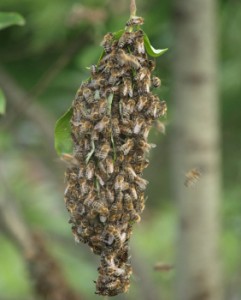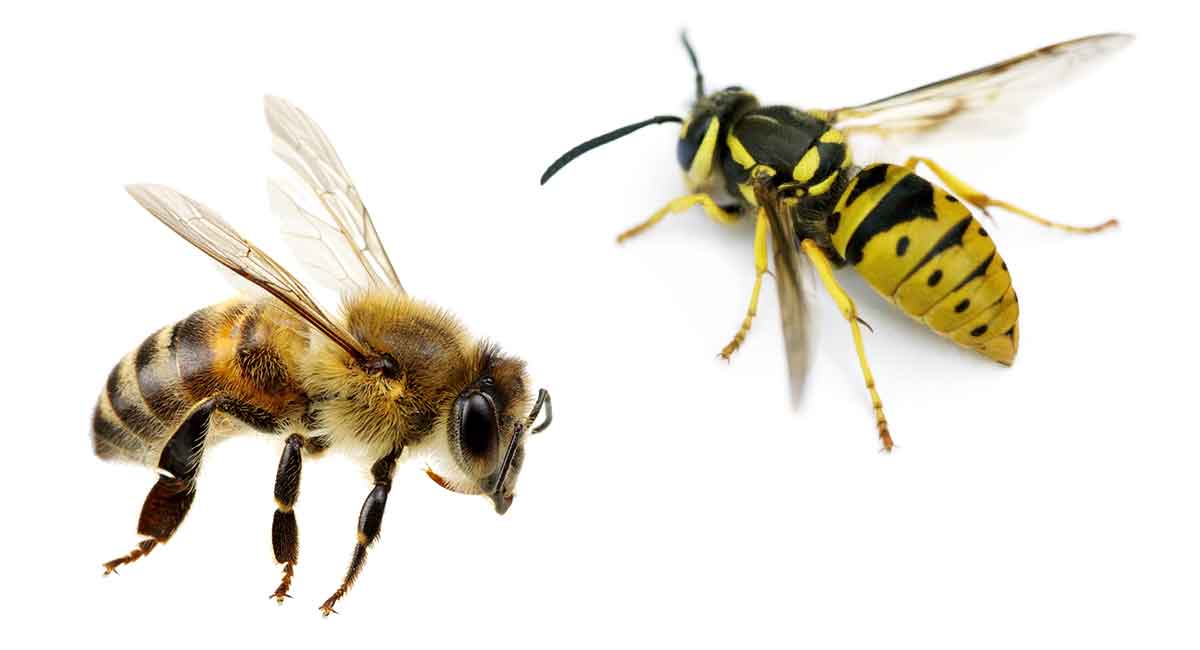Is it a bee, or is it a wasp?
How to tell them apart
We are receiving a great many calls at the moment from people who are
concerned about an invasion of wasps!
When we arrive on the property, the problem is usually a large swarm of bees.
Large numbers of bee swarms are common in the first warm weather of May each year.
You can find out more about them in this article: When bees become a problem

Bee or wasp?
Here are some helpful tips to help you spot the difference between wasps and bees.
If you can see hundreds of these insects and it is early in the year (May/June) they are likely to be bees. A wasp colony is still quite small at this time of year, and the workers are busy minding their own business and building a their nest.
If the insects are clustered together like the ones in the picture above, they are bees. Wasps do not cling onto one another’s bodies in a cluster.
A nest?
If you can see a nest which the insects are going in an out of, and if the nest looks a bit like a grey papier mache ball or a grey upside down cabbage, it is a wasp’s nest. And the insects are wasps.
Wasps tend not to bother people until nests get large and they develop a sweet tooth later in the summer. However, disposing of the nest at an early stage is easier and makes good sense.
Honey bees
The honey bee is a useful and valuable creature. You can find out more in our article ‘The Honey Bee’. Check out: when bees become a problem if you think you may need help
Call us
Give us a call if you need a bee or a wasp problem solving on
01428 714031

